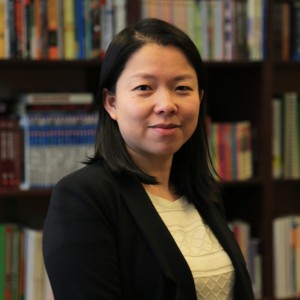Tianjin: A Traditional-Modern Liveable City
In March of 2017, a 3-day tailored training programme of China Insights was delivered by the Groningen Confucius Institute to staff members from the Municipality of Groningen who were going to join a 30-people delegation led by the mayor of Groningen the following April on their trip to China. As new visitors to China, they were excited to get to know everything about the country, the culture and the city they were visiting, named Tianjin, which established a sister-city relationship with Groningen in 1985. To meet their needs, lectures were specially designed and given to them, one of which was about Tianjin. Considering it is a city with more than 600 years of history, there is indeed much to tell about Tianjin.
Tianjin is now a metropolis in northern China and one of China’s four municipalities directly under the Central Government. Called ‘Jin’ for short, Tianjin literally means Heaven's ferry. In 1400, the Prince of Yan, Zhu Di (1360-1424), who later became the third emperor of the Ming Dynasty (1368-1644), crossed the Grand Canal (an inland waterway of 1000 miles long extending from Tianjin in the north to Hangzhou in the south) at the estuary to journey south and fight for the throne. To commemorate this war, on December 23, 1404, Zhu Di officially named the site Tianjin, which means Heaven’s ferry. Owing to Tianjin’s strategic military location, a fortress and barracks were built there and troops installed. This gave rise to the name Tianjinwei (wei means a military establishment), and was the starting point of Tianjin’s development. The First Opium War of 1840-1842 forced the city to open to the outside world. This made it a center for cultural communications between China and the West and has also contributed to the multi-cultural taste of the city, most prominently the juxtaposed eastern and western architecture.
If you ask a Chinese person what will come into their mind when thinking of Tianjin, most probably the answer will be: Tianjin Hua (Tianjin dialect). The local people talk with a unique and amusing accent, as if they are performing improvisational cross talk. Do not feel strange or unhappy if you are called Jiejie (sister) by a local person older than you. This is just their typical way of addressing a female stranger to show respect and kindness as if you are family.
Tianjin is only 120 kilometers from the capital city of Beijing in the northwest. The high-speed train, which travels at an amazing 350 km per hour, takes you to Beijing within half an hour. However, unlike Beijing and other big cities in China, the life pace in Tianjin is much slower. Most locals focus on enjoying life rather than spending all their time working. Having two deep-fried dough sticks and a bowl of bean curd jelly for breakfast, watching crosstalk performances while sipping tea and lingering over the delicate handicrafts showcased along the antique street are quite common and favoured pastimes for Tianjin people. One may get a glimpse of their zeal for life from their addiction to delicious food.
There is an old saying in Tianjin: Pawning for seafood is not a waste, which means money spent on seafood is always worth it. Due to Tianjin’s geographical location on the coast, Tianjin people have evolved an incomparable passion for seafood. In old times, Tianjin people even would pawn their family belongings for money so that they could buy some seafood, since the right season waits for no man. According to Tianjin people, only the freshest seafood is worth savouring, which reflects in a sense how the Tianjin people are keen on the pursuit of delicious food.
Tianjin originated along the construction of the Grand Canal in the Sui Dynasty (581-618), which connects the south and north of China. Tianjin’s cuisine is characterised by a variety of sea food combining special features of Sichuan, Shandong, Huaiyang and Zhejiang food to form a unique style of its own. Tianjin’s food is so famous that one legend says Emperor Qianlong, the 4th emperor of the Qing Dynasty (1644-1911), regularly sent his representatives from his throne in Beijing to fetch some of Tianjin’s delicious food. All-inclusive is the most distinctive characteristic of Tianjin cuisine. Tianjin is also known for its great variety of snacks, and the most renowned are the so-called ‘Three Unique Delicacies of Tianjin’, which include goubuli baozi (goubuli steamed stuffed bun), guifaxiang shibajie ma hua (18th street fried dough twists) and er duo yan zha gao (ear-hole-like fried rice cakes).
From the long list of historical figures who have ever resided in Tianjin, it is not difficult to draw the conclusion that Tianjin is a city to enjoy life. There are more than 200 residences of historical figures, which are historical and cultural heritages for Tianjin. The many celebrities who once lived there include Puyi, the last Emperor of China; Zhou Enlai, the first Premier of the People's Republic of China; two presidents of the Republic of China and seven prime ministers and acting prime ministers; renowned educator Zhang Boling; famous industrialists Zhou Xuexi, Li Zhuchen and Song Feiqin; famous educators Yan Xiu and Zhang Boling; and late president of the United States Herbert Clark Hoover.
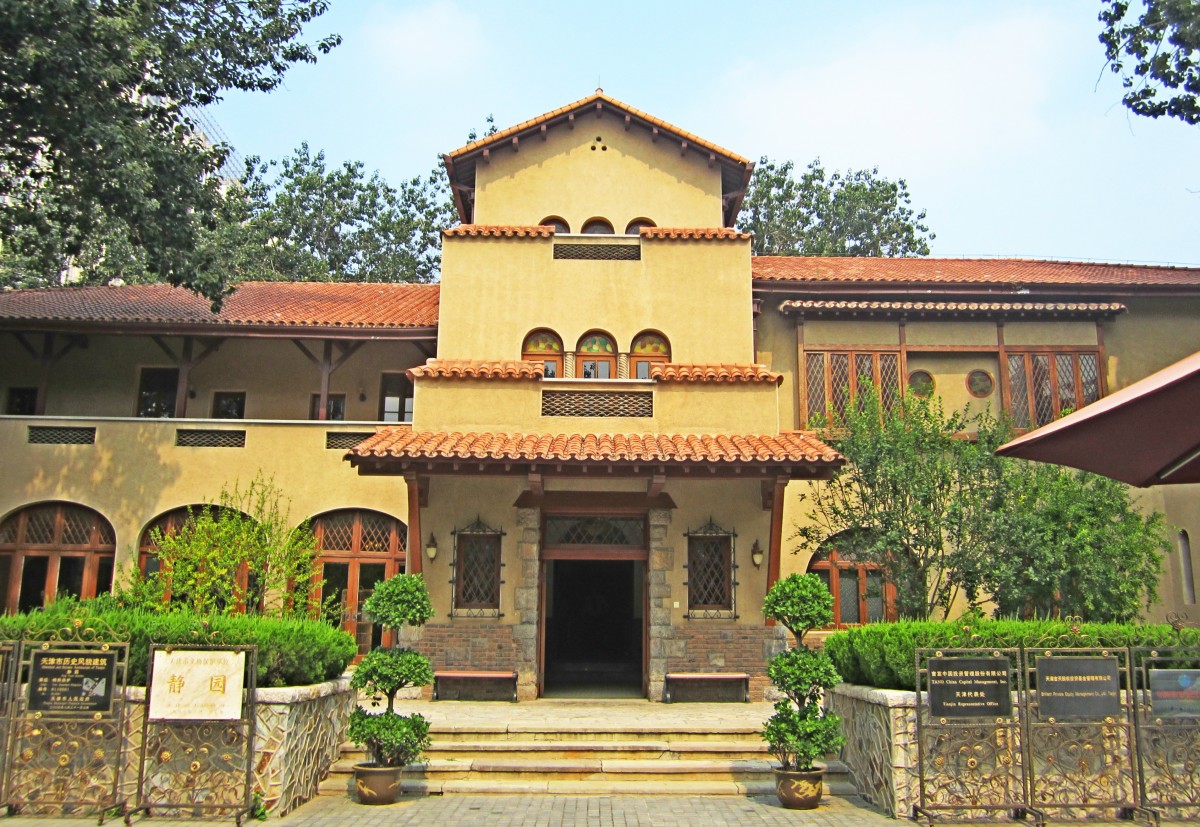
- Jingyuan Garden, the former residence of Puyi (the last emperor of China) ©Hao Cui
Such a prosperous city is undoubtedly appealing to artists who seek prosperous careers. It is then not difficult to understand why Tianjin is the cradle of verified folk arts. Varieties of folk arts have originated, evolved, developed and matured in Tianjin, such as Jingyun Dagu (story-telling in Beijing dialect with drum accompaniment), Tianjin Kuaibaner (a form of Chinese narrative singing accompanied by a pair of clappers), Xiangsheng (crosstalk), etc. Folk art is an integral part of Tianjin culture. Tianjin is a respected home base of Beijing opera, one of the most prestigious forms of Chinese opera. An old saying spreads in the Chinese operatic circle: To learn in Beijing and to become popular in Tianjin, which means if a performer wants to be popular in China, Tianjin must be their first step. This is because over the years many Peking Opera maestros have come from Tianjin and established their reputation on the stages of Tianjin. Therefore, Tianjin audiences have all become discerning experts in opera appreciation, developing their unique and high-standard artistic measures and criteria. If you can withstand and survive the fastidious Tianjin audience, you will win the recognition of the entire country.
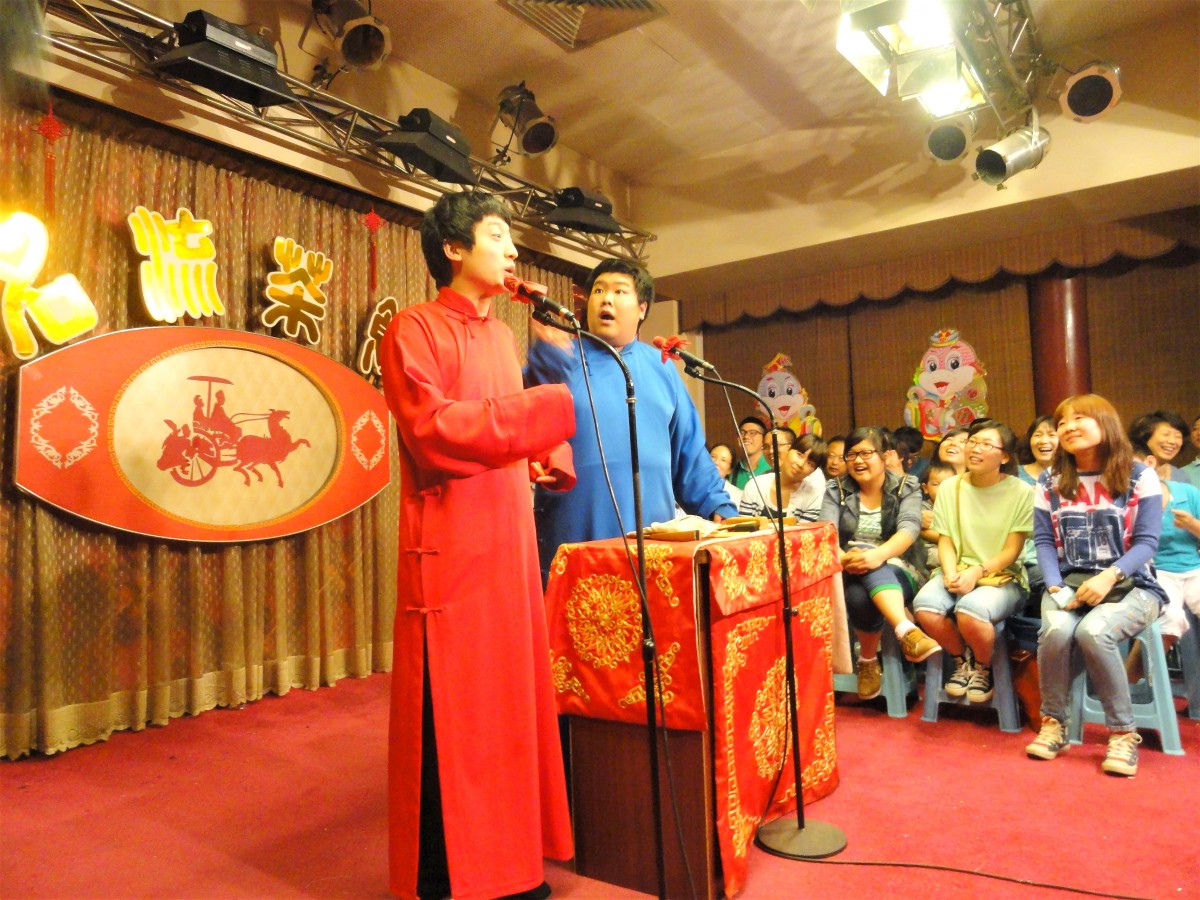
- Xiangsheng (crosstalk) live performance ©Hao Cui
Walking along the Ancient Culture Street line with hundreds of stores selling a wide variety of traditional folk handicrafts, one may surely be amazed by their exquisite workmanship and artistic appeal. Of the various traditional folk handcrafts in Tianjin, the most famous are Yang Liuqing New Year Paintings, Niren Zhang Painted Sculptures and Wei’s Kites. Yang Liuqing New Year Paintings, named after their production place –Yangliuqing Town– are a kind of popular Chinese New Year themed and traditional style folk woodcut paintings. The paintings mainly portray people's daily lives and record local customs, reflecting ancient Chinese ideals and aesthetics. Niren Zhang Painted Sculptures are a type of colourful clay figurines depicting a variety of vivid characters. They were initiated by Zhang Mingshan (1826-1906), a Tianjin folk artist during the Qing Dynasty (1821-1851). Up until now, Niren Zhang Painted Sculptures have had nearly 180 years of history. Tianjin is one of the main producing areas of kites in China. Among all Tianjin kites, the kites of Kite Wei are most famous and exquisite. Kite Wei has been developed for more than 100 years and has become a kind of precious collection favoured by many museums at home and abroad.
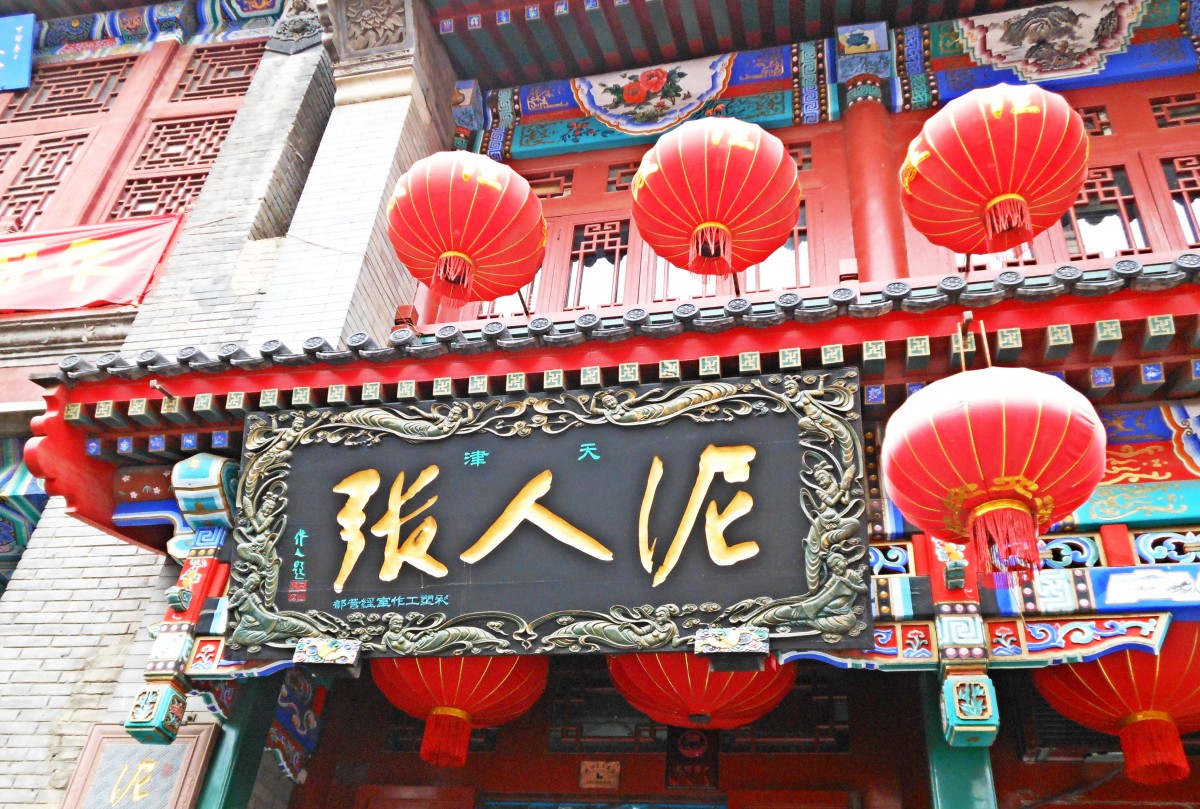
- Niren Zhang Shop ©Hao Cui
Life goes on and Tianjin people’s pursuit for a happy life never ends. Tianjin is now a modern and developed city. Over the past decade, the city has been one of the fastest growing in the world, playing an important role in China’s economic expansion. Tianjin is home to the first EADS A320 Airbus final assembly plant located outside of Europe and compiles a long list of prestigious international joint ventures, including Airbus, Motorola, Mitsubishi, Toyota and Samsung. The boom of the city has attracted large numbers of migrants. However, you may not get the feeling that it is an immigrant city. Despite all the changes in Tianjin, the city has never lost its distinctive Chinese flavour and Tianjin people have persistently held to their traditional customs and craftsmanship and have tried to retain their authentic way of life.
If you have a chance to visit Tianjin, do get on the Tianjin Eye, a 120-metre-tall Ferris wheel built above the Yongle Bridge over the Hai River in Tianjin, and enjoy the superb panorama of the modern metropolis abundant in historical stories and folk flavour. You will exclaim over how time and tide have accomplished such a unique and charming city and people, glittering like a pearl by the Haihe River.
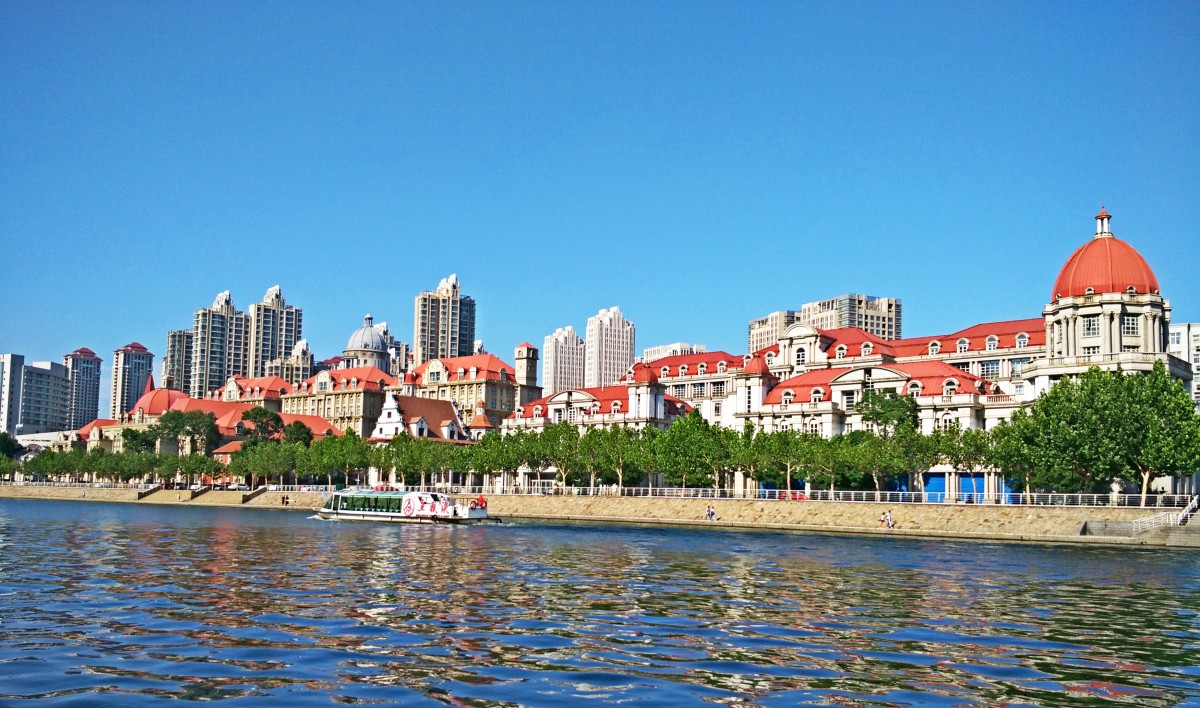
 Share on Facebook
Share on Facebook Share on Twitter
Share on Twitter Share on LinkedIn
Share on LinkedIn